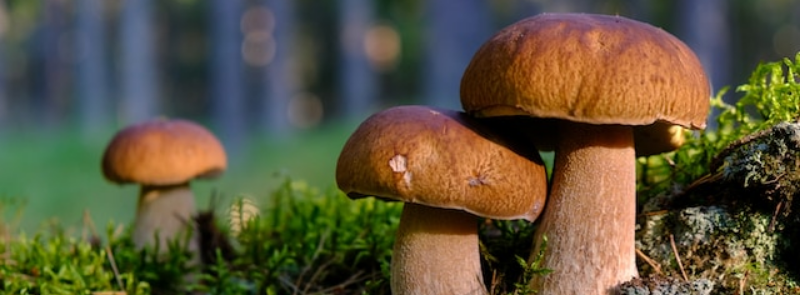
When It Occurs
Every October 28th
Timeline
Days Passed (747)
# Hashtags
#WildFoodsDay #SustainableEating
On October 28th each year, Wild Foods Day is celebrated, paying tribute to wildflowers, fruits, and vegetables. Wild foods encompass a variety of elements, including wild greens, mushrooms, roots, and fruits. Notable wild vegetables featured on this day include Purslane, Dandelion greens, Stinging nettle, Wild spinach, Wild asparagus, Fiddlehead fern, and Wild garlic.
What is Wild Foods Day?
Wild Foods Day encourages people to explore the diverse range of edible plants, fungi, and other ingredients that can be found growing naturally in the British countryside. The day promotes the importance of foraging skills, understanding local ecosystems, and practicing sustainable harvesting methods. It's an opportunity for individuals, chefs, and food enthusiasts to reconnect with the environment and enjoy nature's bounty.
The movement behind Wild Foods Day is often tied to the principles of sustainable eating, promoting food security and reducing reliance on mass-produced and industrially farmed foods. By focusing on wild, local foods, the event highlights the richness of the UK’s natural flora and fauna, encouraging people to explore alternative food sources that are both nutritious and delicious.
History and Background
The celebration of wild foods has been around for centuries, as foraging was once a necessary part of survival in rural communities. However, in recent decades, there has been a renewed interest in wild foods due to the rise of environmental consciousness, the slow food movement, and the increasing popularity of foraging as a hobby.
Although Wild Foods Day as an organized event is a more modern concept, its roots are deeply linked to the historical foraging traditions of the UK. Wild ingredients such as mushrooms, blackberries, nettles, wild garlic, elderflowers, and chestnuts have long been staples of British foragers, especially during autumn and early winter.
Organizations such as the Woodland Trust, The Wildlife Trusts, and wild food enthusiasts often promote events and walks during this time to educate people about foraging, recognizing edible species, and how to harvest them responsibly.
Key Objectives of Wild Foods Day
-
Raise Awareness About Sustainable Foraging: One of the main goals of Wild Foods Day is to encourage people to forage responsibly. This includes understanding which plants and fungi are safe to eat, ensuring that harvesting practices do not harm ecosystems, and leaving enough behind for wildlife and regrowth.
-
Promote Healthy Eating: Wild foods tend to be rich in nutrients, often more so than cultivated crops. The day highlights the health benefits of including wild edibles in one’s diet, which are often free from pesticides and artificial fertilizers.
-
Reconnect with Nature: Foraging for wild foods offers people the chance to spend time outdoors and develop a closer connection to the natural environment. The activity encourages mindfulness and an appreciation for the seasonal changes in the landscape.
-
Showcase Wild Food Recipes: Wild Foods Day often inspires cooks and chefs to get creative with foraged ingredients. Many celebrate by sharing recipes that incorporate wild foods into traditional or innovative dishes, from nettle soup and wild garlic pesto to elderflower cordial and wild mushroom risotto.
-
Support Local Biodiversity: By learning more about the natural environment and how wild plants and fungi grow, Wild Foods Day promotes the preservation of local biodiversity. Sustainable foraging helps maintain healthy ecosystems, ensuring that future generations can also enjoy wild foods.
Popular Wild Foods in the UK
During Wild Foods Day, a wide range of edible plants, fruits, and fungi are celebrated. Some of the most commonly foraged wild foods in the UK include:
-
Wild Garlic: One of the most recognizable wild plants, wild garlic grows in woodlands and has a mild garlicky flavor. It's used in salads, soups, and sauces.
-
Nettles: Often seen as a weed, stinging nettles are packed with nutrients and can be used to make soups, teas, and even beer, once the stings are neutralized by cooking.
-
Mushrooms: Foraging for wild mushrooms is a popular activity in the UK, especially during autumn. Varieties like chanterelles, ceps (porcini), and field mushrooms are prized, but it’s important to correctly identify mushrooms to avoid toxic species.
-
Blackberries: In late summer and early autumn, brambles are laden with blackberries, which are commonly used in jams, crumbles, pies, and syrups.
-
Elderberries and Elderflowers: Elderflowers, collected in spring, are used to make refreshing drinks and syrups, while elderberries in autumn can be made into jams, wines, and sauces.
-
Sloes: The berries of the blackthorn bush, sloes are used to make sloe gin, a popular autumnal spirit.
-
Hawthorn Berries: These small red berries can be used in jellies, syrups, or herbal teas.
-
Hazelnuts and Sweet Chestnuts: Wild nuts like hazelnuts and chestnuts are foraged in autumn and are great for snacking or adding to dishes.
Events and Activities
While Wild Foods Day isn’t widely commercialized, local organizations and foraging experts often host foraging walks, workshops, and cooking demonstrations. These events are aimed at educating participants on how to identify edible species, the importance of sustainable harvesting, and how to use foraged foods in cooking.
Some key activities associated with Wild Foods Day include:
-
Foraging Walks: Guided walks led by experts in fields, woodlands, or along coastal areas are a common way to celebrate the day. These walks help participants learn about edible species, medicinal plants, and fungi while also providing an understanding of how to forage responsibly.
-
Workshops and Talks: Various organizations may offer workshops that teach people how to process and cook wild foods. These might include lessons on making jams, cordials, herbal remedies, or wild food feasts.
-
Wild Food Feasts: Pop-up events and food festivals may showcase wild ingredients with special menus that feature dishes made from foraged foods. These events encourage chefs and home cooks to get creative and incorporate local, wild ingredients into their cooking.
-
Educational Programs: Schools, nature reserves, and wildlife organizations might also use Wild Foods Day as an opportunity to educate children and communities about the environment, sustainability, and the importance of biodiversity.
Responsible Foraging Guidelines
As part of Wild Foods Day, foragers are encouraged to follow a "leave no trace" approach to ensure that their activities do not harm the environment. Key guidelines include:
-
Know What You're Picking: Only forage for plants and fungi that you can positively identify as edible. Some species can be harmful or toxic if eaten, so it’s important to be certain before consuming anything from the wild.
-
Respect Protected Species: Certain plants and fungi are protected by law in the UK and should not be picked. It’s important to be aware of the local laws and regulations regarding foraging.
-
Sustainable Harvesting: Always take only what you need, leaving enough for wildlife and allowing plants to regrow. Avoid damaging the environment while foraging, and never strip an area of its resources.
-
Be Mindful of Land Ownership: Ensure that you have permission to forage on private land, and follow the rules when foraging in public spaces like nature reserves or parks.
Conclusion
Wild Foods Day in the United Kingdom is a celebration of nature’s abundance and the importance of sustainable foraging. By exploring the wide array of wild, edible plants and fungi available in the UK, people can reconnect with the environment, enjoy healthy and nutritious food, and support biodiversity. Whether through guided walks, wild food feasts, or simply foraging in their local area, participants of Wild Foods Day gain a deeper appreciation for the natural world and its culinary offerings.


